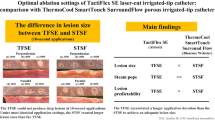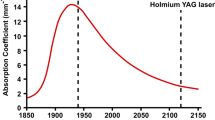Abstract
The success of surgical management of lower pole stones is principally dependent on stone fragmentation and residual stone clearance. Choice of surgical method depends on stone size, yet all methods are subjected to post-surgical complications resulting from residual stone fragments. Here we present a novel method and device to reposition kidney stones using ultrasound radiation force delivered by focused ultrasound and guided by ultrasound imaging. The device couples a commercial imaging array with a focused annular array transducer. Feasibility of repositioning stones was investigated by implanting artificial and human stones into a kidney-mimicking phantom that simulated a lower pole and collecting system. During experiment, stones were located by ultrasound imaging and repositioned by delivering short bursts of focused ultrasound. Stone motion was concurrently monitored by fluoroscopy, ultrasound imaging, and video photography, from which displacement and velocity were estimated. Stones were seen to move immediately after delivering focused ultrasound and successfully repositioned from the lower pole to the collecting system. Estimated velocities were on the order of 1 cm/s. This in vitro study demonstrates a promising modality to facilitate spontaneous clearance of kidney stones and increased clearance of residual stone fragments after surgical management.






Similar content being viewed by others
References
Albala DM, Assimos DG, Clayman RV (2001) Lower pole I: a prospective randomized trial of extracorporeal shock wave lithotripsy and nephrostolithotomy for lower pole nephrolitiasis—Initial results. J Urol 166:2072–2080
Pearle MS, Lingeman JE, Leveilee R (2008) Prospective randomized trial comparing shock wave lithotripsy and ureteroscopy for lower pole caliceal calculi 1 cm or less. J Urol 179:S69–S73
Chen RN, Streem SB (1996) Extracorporeal shock wave lithotripsy for lower pole calculi: long-term radiographic and clinical outcome. J Urol 156:1572–1575
Sampaio FJ, Aragao AH (1994) Limitations of extracorporeal shockwave lithotripsy for lower caliceal stones: anatomic insight. J Endourol 8:241–247
Chiong E, Hwee ST, Kay LM (2005) Randomized controlled study of mechanical percussion, diuresis, and inversion therapy to assist pas-sage of lower pole renal calculi after shock wave lithotripsy. J Urol 65:1070–1074
Kekre NS, Kumar S (2008) Optimizing the fragmentation and clearance after shock wave lithotripsy. Curr Opin Urol 18:205–209
Pace KT, Tariq N, Dyer SJ (2001) Mechanical percussion, inversion, and diuresis for residual lower pole fragments after shock wave lithotripsy: a prospective, single blind, randomized controlled trial. J Urol 166:2065–2071
Torr GR (1984) The acoustic radiation force. J Acoust Soc Am 52(5):402–408
Lafon C, Zderic V, Noble ML, Yuen JC, Kaczkowski PJ, Sapozhnikov OA, Chavrier F, Crum LA, Vaezy S (2005) Gel phantom for use in high intensity focused ultrasound dosimetry. Ultrasound Med Biol 31(10):1383–1389
U.S. Food and Drug Administration (2008) Information for Manufacturers Seeking Marketing Clearance for Diagnostic Ultrasound Systems and Transducers
O’Neil HT (1949) Theory of focusing radiators. J Acoust Soc Am 21:516–526
Bailey MR, Khokhlova VA, Sapozhnikov OA, Kargl SG, Crum LA (2003) Physical mechanisms of the therapeutic effect of ultrasound (a review). Acoust Phys 49(4):369–388
Smith-Bindman R, Lipson J, Marcus R, Kim KP, Mahesh M, Gould R, de Gonzalez AB, Miglioretti DL (2009) Radiation dose associated with common computed tomography examinations and the associated lifetime attributable risk of cancer. Arch Intern Med 169(22):2078–2086
Acknowledgments
We thank our colleagues at the Center for Industrial and Medical Ultrasound and the Consortium for Shock Waves in Medicine for advice, shared resources, and review. This work was supported by a grant from the National Space Biomedical Research Institute NCC9-58, NIH DK43881, and NIH DK086371.
Author information
Authors and Affiliations
Corresponding author
Additional information
Proceedings paper from the 3rd International Urolithiasis Research Symposium, Indianapolis, Indiana, USA, December 3–4, 2009.
Rights and permissions
About this article
Cite this article
Shah, A., Owen, N.R., Lu, W. et al. Novel ultrasound method to reposition kidney stones. Urol Res 38, 491–495 (2010). https://doi.org/10.1007/s00240-010-0319-9
Received:
Accepted:
Published:
Issue Date:
DOI: https://doi.org/10.1007/s00240-010-0319-9




